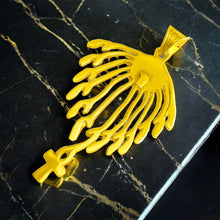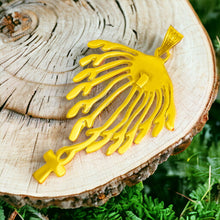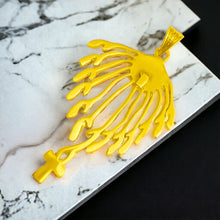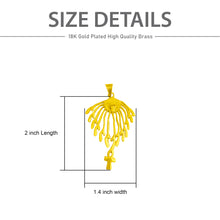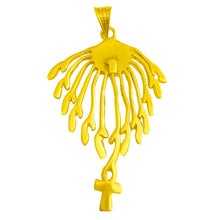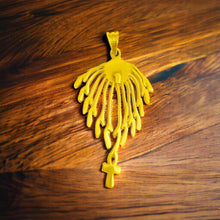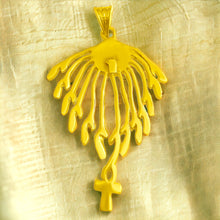Aton Sun Rays Gold Pendant Necklace
- Regular price
- $75.00 USD
- Sale price
- $75.00 USD
- Regular price
-
- Unit price
- /per
Sale
Sold out
Shipping calculated at checkout.
Adding product to your cart
The Aton Sun Rays Gold Pendant Necklace: Inspired by ancient Egyptian symbolism, this elegant pendant pays homage to the sun god Aton, representing vitality and enlightenment. Crafted with meticulous attention to detail, it captures the essence of millennia-old mystique fused with modern elegance.
- History: Inspired by ancient Egyptian sun worship and symbolism.
- Spiritually: Represents the power of the sun, vitality, and enlightenment.
- Talisman: Believed to bring luck, protection, and positive energy to the wearer.
- Handmade: Crafted with care and attention to detail by skilled artisans.
- Healing: Thought to promote physical and mental well-being, boosting confidence and clarity.
-
Material: Made from a blend of 25% Gold and 75% Brass, ensuring durability and resistance to tarnish and if it gets dirty please rub it off with a soft piece of cloth.
- Symbolism: The sun rays symbolize warmth, growth, and life's continuous cycle.
- How to Wear: Simply slide onto any chain up to 5mm thickness for versatile styling.
- Ideal Gift: Perfect for someone seeking spiritual connection, inner strength, or a touch of luxury.
History Side For Those Who Are Interested
The Egyptian Aton Sun Rays Amulet holds a significant place in the annals of ancient Egyptian history, symbolizing both religious fervor and cultural identity. Its origins trace back to the Amarna Period, a brief but transformative era during the 18th Dynasty of the New Kingdom, specifically during the reign of Pharaoh Akhenaten (1353–1336 BCE).
Akhenaten, previously known as Amenhotep IV, ascended to the throne with a radical vision, seeking to revolutionize Egypt's religious landscape by introducing the worship of a single deity, the sun disk, known as Aten. This marked a departure from the polytheistic traditions that had prevailed for millennia. Akhenaten proclaimed Aten as the supreme god, relegating traditional gods like Amun, Ra, and Osiris to secondary roles.
Central to the worship of Aten was the belief in its life-giving rays, symbolized by the solar disk with extended rays terminating in hands, each offering ankh (the symbol of life) to the Pharaoh and his family. This symbolism reflected Akhenaten's assertion of his divine connection to Aten, portraying himself and his royal family as intermediaries between the god and the people.
The Aton Sun Rays Amulet emerged as a tangible expression of this newfound religious fervor. Crafted from various materials such as faience, gold, or semi-precious stones, the amulet took the form of a small pendant depicting the Aten with its rays extending outward. It served not only as a religious symbol but also as a protective talisman, believed to bestow the blessings and protection of Aten upon the wearer.
However, with the death of Akhenaten, his religious reforms faced vehement opposition from the traditional priesthood and elite classes. His successors, notably Tutankhamun and Horemheb, sought to restore the old order, erasing Akhenaten's legacy from the annals of history. The Aton Sun Rays Amulet, along with other artifacts associated with the Amarna Period, suffered suppression and destruction during this period of religious and political upheaval.
Despite attempts to obliterate Akhenaten's memory, archaeological discoveries in the 19th and 20th centuries unearthed numerous artifacts, including the Aton Sun Rays Amulet, shedding light on this enigmatic period of ancient Egyptian history. Today, these artifacts stand as testaments to Akhenaten's visionary but ultimately doomed attempt to reshape Egypt's religious landscape. The Aton Sun Rays Amulet, in particular, remains a poignant symbol of the transient nature of religious and political ideologies throughout history.
Use left/right arrows to navigate the slideshow or swipe left/right if using a mobile device

















